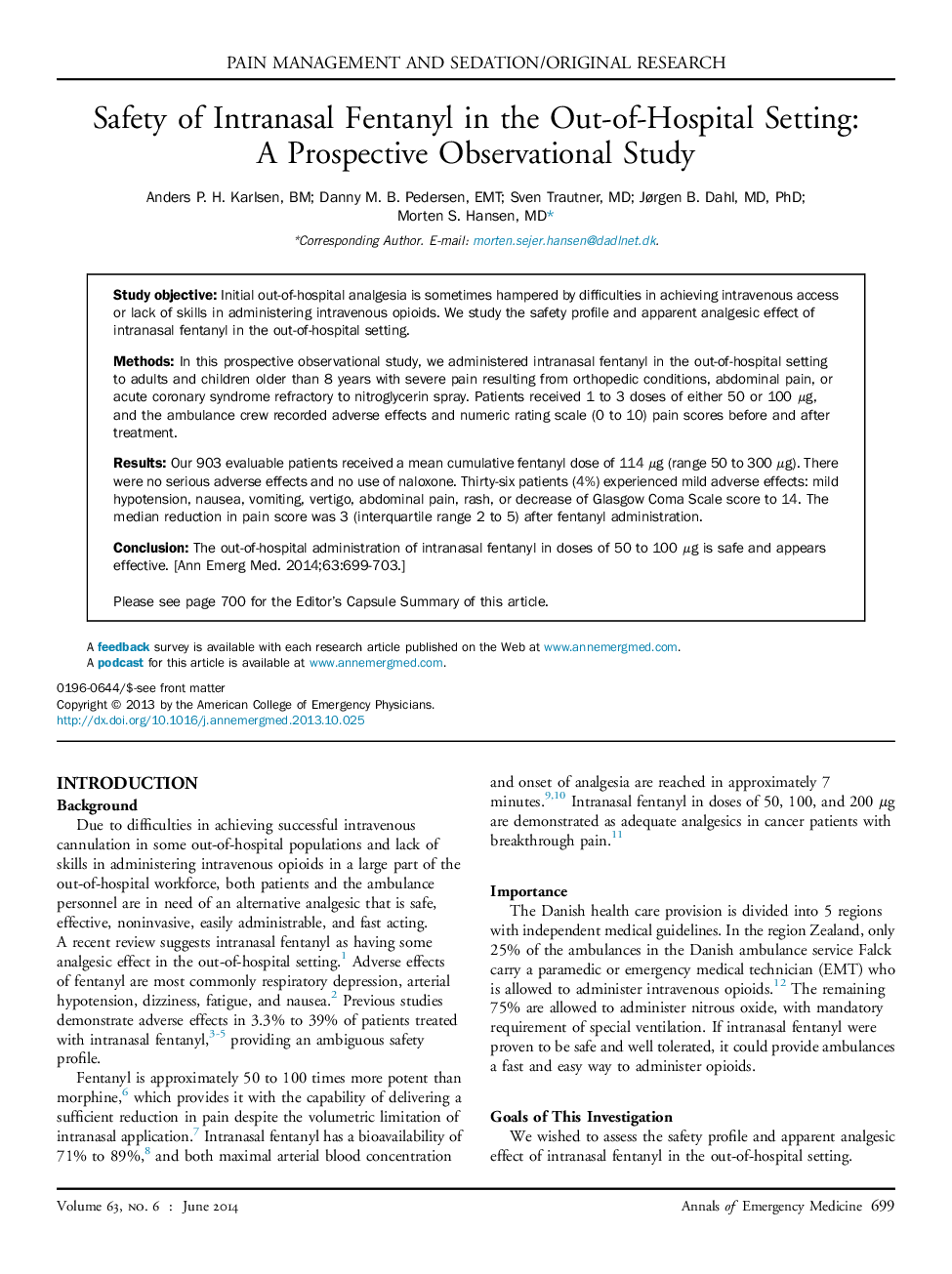| Article ID | Journal | Published Year | Pages | File Type |
|---|---|---|---|---|
| 6081072 | Annals of Emergency Medicine | 2014 | 5 Pages |
Study objectiveInitial out-of-hospital analgesia is sometimes hampered by difficulties in achieving intravenous access or lack of skills in administering intravenous opioids. We study the safety profile and apparent analgesic effect of intranasal fentanyl in the out-of-hospital setting.MethodsIn this prospective observational study, we administered intranasal fentanyl in the out-of-hospital setting to adults and children older than 8 years with severe pain resulting from orthopedic conditions, abdominal pain, or acute coronary syndrome refractory to nitroglycerin spray. Patients received 1 to 3 doses of either 50 or 100 μg, and the ambulance crew recorded adverse effects and numeric rating scale (0 to 10) pain scores before and after treatment.ResultsOur 903 evaluable patients received a mean cumulative fentanyl dose of 114 μg (range 50 to 300 μg). There were no serious adverse effects and no use of naloxone. Thirty-six patients (4%) experienced mild adverse effects: mild hypotension, nausea, vomiting, vertigo, abdominal pain, rash, or decrease of Glasgow Coma Scale score to 14. The median reduction in pain score was 3 (interquartile range 2 to 5) after fentanyl administration.ConclusionThe out-of-hospital administration of intranasal fentanyl in doses of 50 to 100 μg is safe and appears effective.
